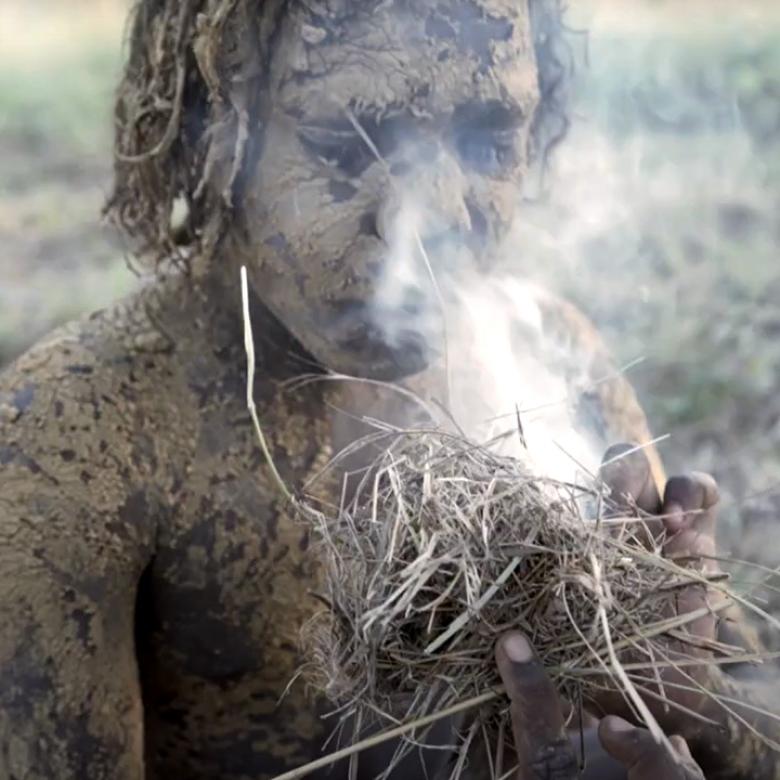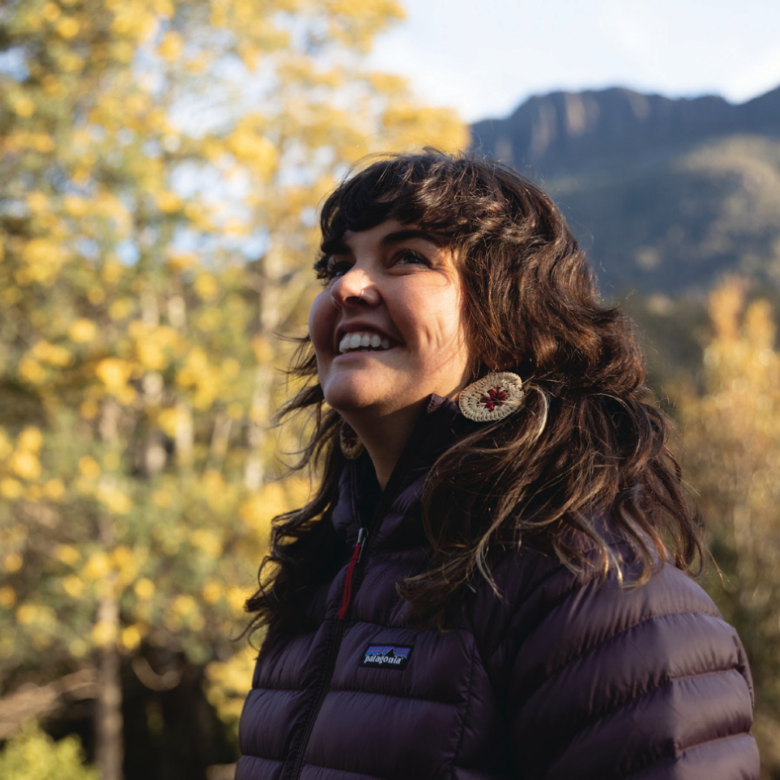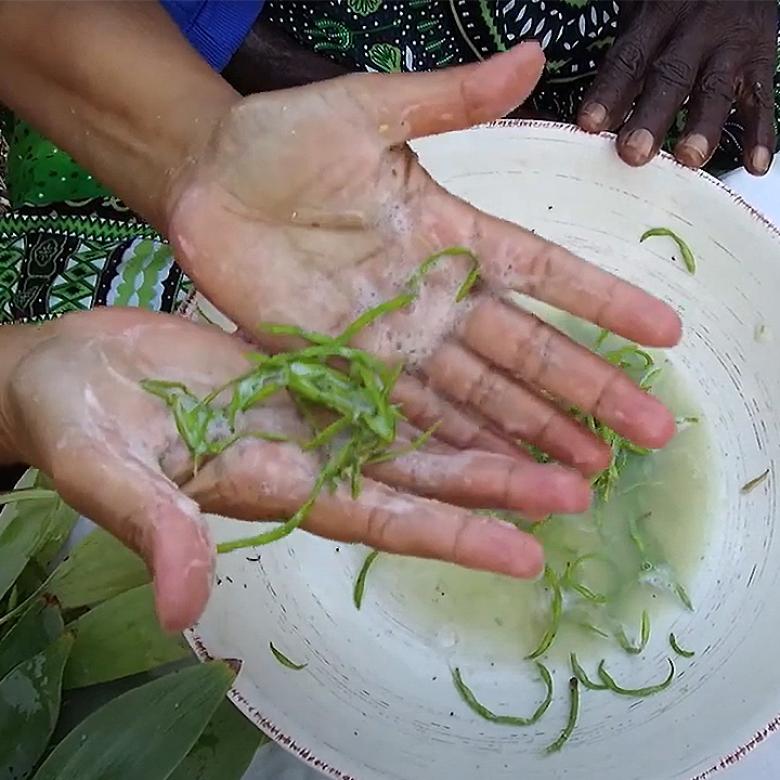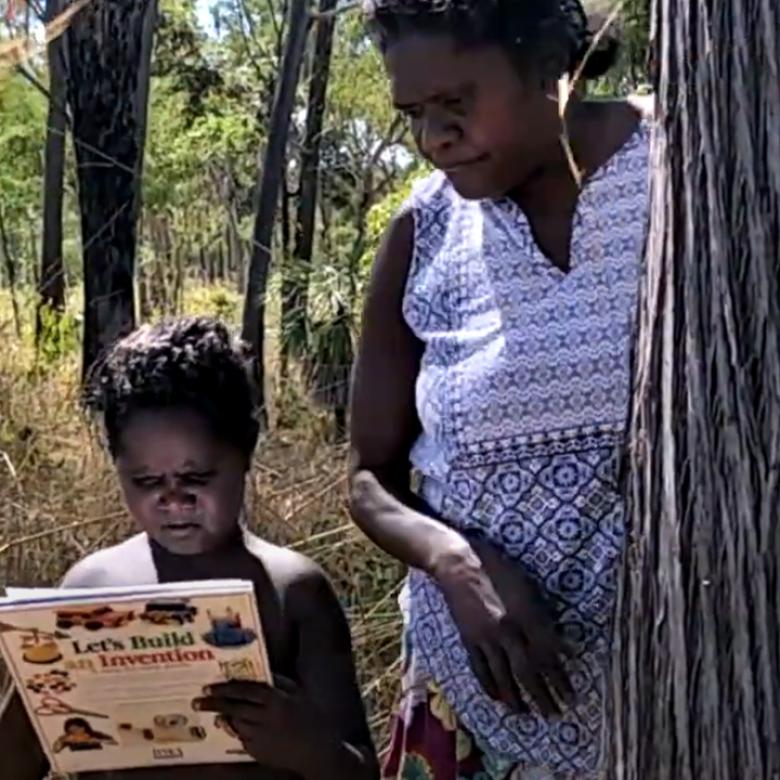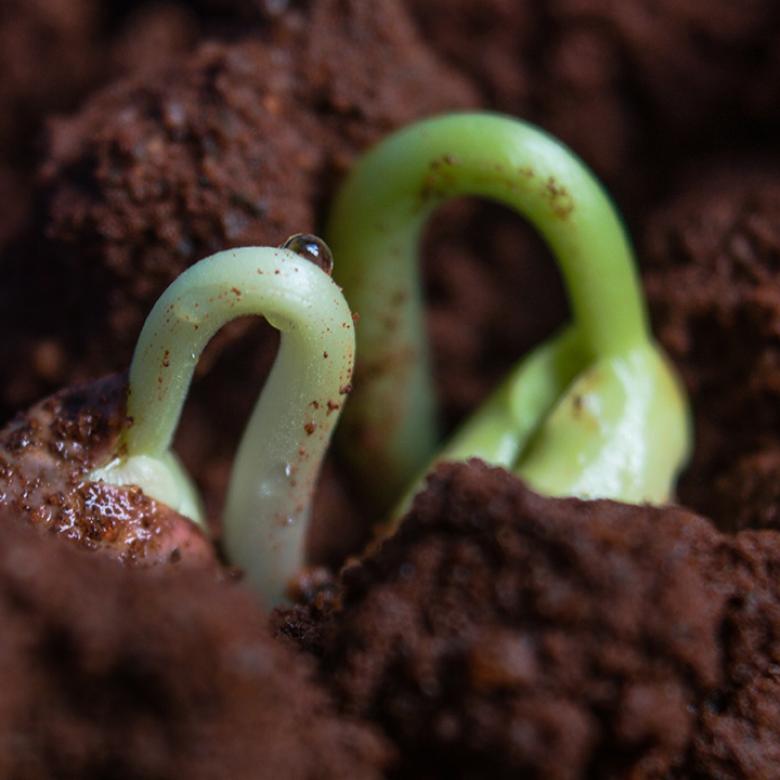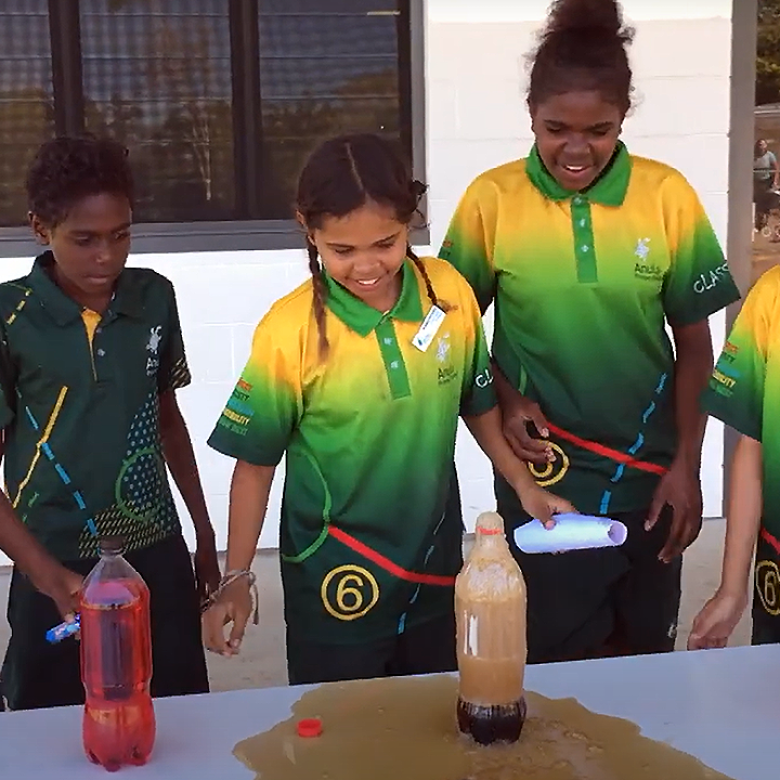Learn the science behind friction and fire!
In Ngukurr, the southern region of Arnhem Land, local Yugul Mangi Rangers share how they make fire, the science behind these reactions and how they use fire to look after country.
[Image appears of text on a black screen: The following video made by Ngukurr Story Project was prepared for Questacon’s Science in First Languages Project as part of the International Year of Indigenous Languages 2019]
[Music plays and the image changes to show text on the screen: Science In First Language]
[Images flash through of various people and children in various traditional activities, dances, talking, experiments, and school children playing basketball]
[Image changes to show text: Science in First Language]
[Image changes to show a view of the roadside flashing past towards a road sign, and then image changes to show a medium view of Maritza Roberts talking to the camera, and text appears: Maritza Roberts, Ranger]
Maritza Robers: Hello, my name is Maritza Roberts.
[Image changes to show a wide view of a person facing a large road sign, and then changes to show a medium view of Maritza Roberts talking to the camera, and text appears: “We welcome you all to Ngukurr!”, Some of my work with the Yugul Mangi Rangers, is using fire to look after country well]
Some of my work with the Yugul Mangi Rangers is using fire to look after country well.
[Image changes to show young males daubed in mud adding grass to a smoking fire, and text appears: In the old days we didn’t have lighters or matches, We had to start fires with sticks of wood]
In the old days we didn’t have lighters or matches. We had to start fires with sticks of wood.
[Image changes to show a medium view of Maritza Roberts talking to the camera, and text appears: Maybe you’ve heard of that word FRICTION, It’s a scientific word]
Maybe you’ve heard of that word, Friction. It’s a scientific word.
[Images move through to show a close side profile of a muddy face, a medium view of the young male rubbing sticks, and then Maritza talking to the camera, and text appears: When you rub your hands together, and they get hot, that’s because of FRICTION, Some of our senior men, taught some of our young boys, how to start a fire using wood and friction]
When you rub your hands together and they get hot, that’s because of friction. Some of our senior men taught some of our young boys how to start a fire using wood and friction.
[Images move through to show close views of hands holding sticks, hands rubbing a stick between them, and then hands holding a stick still, and text appears: They get dry sticks, and grass, and rub their hands together, Movement Energy, Friction turns, really fast, like this]
They get dry sticks and grass and rub their hands together really fast, like this.
[Image changes to show a medium view of Maritza talking to the camera, and text appears: Into Heat Energy, Rub with strength and energy, so that stick gets hot and catches fire]
Rub it with strength and energy so that stick gets hot and catches fire.
[Image changes to show hands holding a stick still while another is rubbed into it, and text appears: If you blow on it, it can light up]
If you blow on it, it can light up.
[Images move thought to show a young male blowing onto smoking grass and then flames appear, the lit grass being placed next to the sticks and the flames growing, and then Maritza talks to the camera, and text appears: I listened and learned really closely, so I could learn how to do my Ranger job, how it should be done, And we know how to look after country properly now]
You blow and give the fire oxygen. I listened and learned really closely so I could learn how to do my Ranger job, how it should be done. And we know how to look after country properly now.
[Images move through to show people posing for the camera, a group sitting waving at the camera, Maritza sitting writing, and then a smoky tree canopy, and text appears: First, we have a fire meeting, at Emu Springs, with all the ranger groups, from North and South East Arnhemland, and also Bushfires NT]
First, we have a fire meeting at Emu Springs with all the ranger groups from North and South East Arnhemland and also Bushfires NT.
[Images changes to show a wide view of Maritza bent examining the road side ground, and then image changes to show a road side burn, and text appears: Then we do early burning, from June to August, making sure no big fires burn out of control]
Then we do early burning from June to August, making sure no big fires burn out of control.
[Image changes to show a medium view of Maritza talking and then waving to the camera, and text appears: Thanks for watching! See you soon!]
Thanks for watching! See you soon!
[Music plays and image changes to show a black screen with the Australian Government, Department of Industry Innovation and Science and the Questacon logos, and text appears: Presenter and Director, Maritza Roberts, Featuring, Dwayne Daniels, Joshua Murrungun, Noah Murrungun, Abraham Ngalmi, Eathan Roberts, Producer, Courtney Collins, Writer and Editor, Will Tinapple, Translations, Maritza Roberts, Ngukurr Language Centre, Camera, Dan Johnson, Callum Flinn, Sound, Ally Drinkwater]
[Image changes to show new text on a black screen: Thanks to, Yugul Mangi Rangers, Ngukurr Story Project, Ngukurr Arts Centre, Ngukurr Language Centre, Formation Studios, Grant Thompson, Folmed on Ngandi Country, Lake Kathrine NT and Ngukurr, NT, Thanks to the Ngandi People and the Yugul Mangi People]
[Image changes to show an animation of a Landcruiser driving across the screen past a few trees, grass and rocks, and dust can be seen billowing behind, and then morphing into text: Ngukurr Story Project]
This information is cultural material provided by First Nations people and remains their Indigenous Cultural and Intellectual Property (ICIP). This material may be removed or amended as needed.

